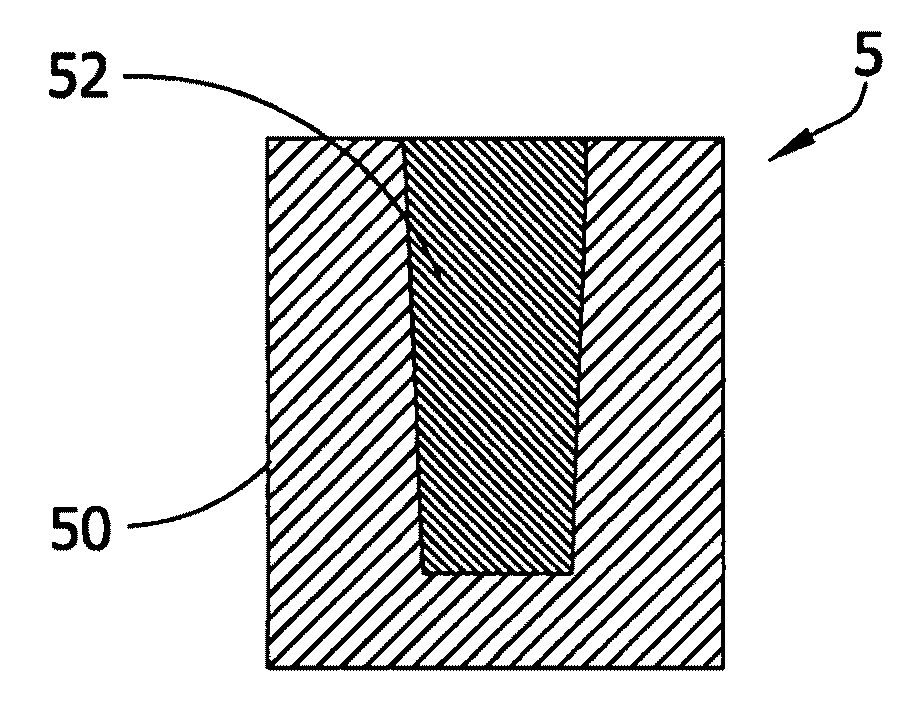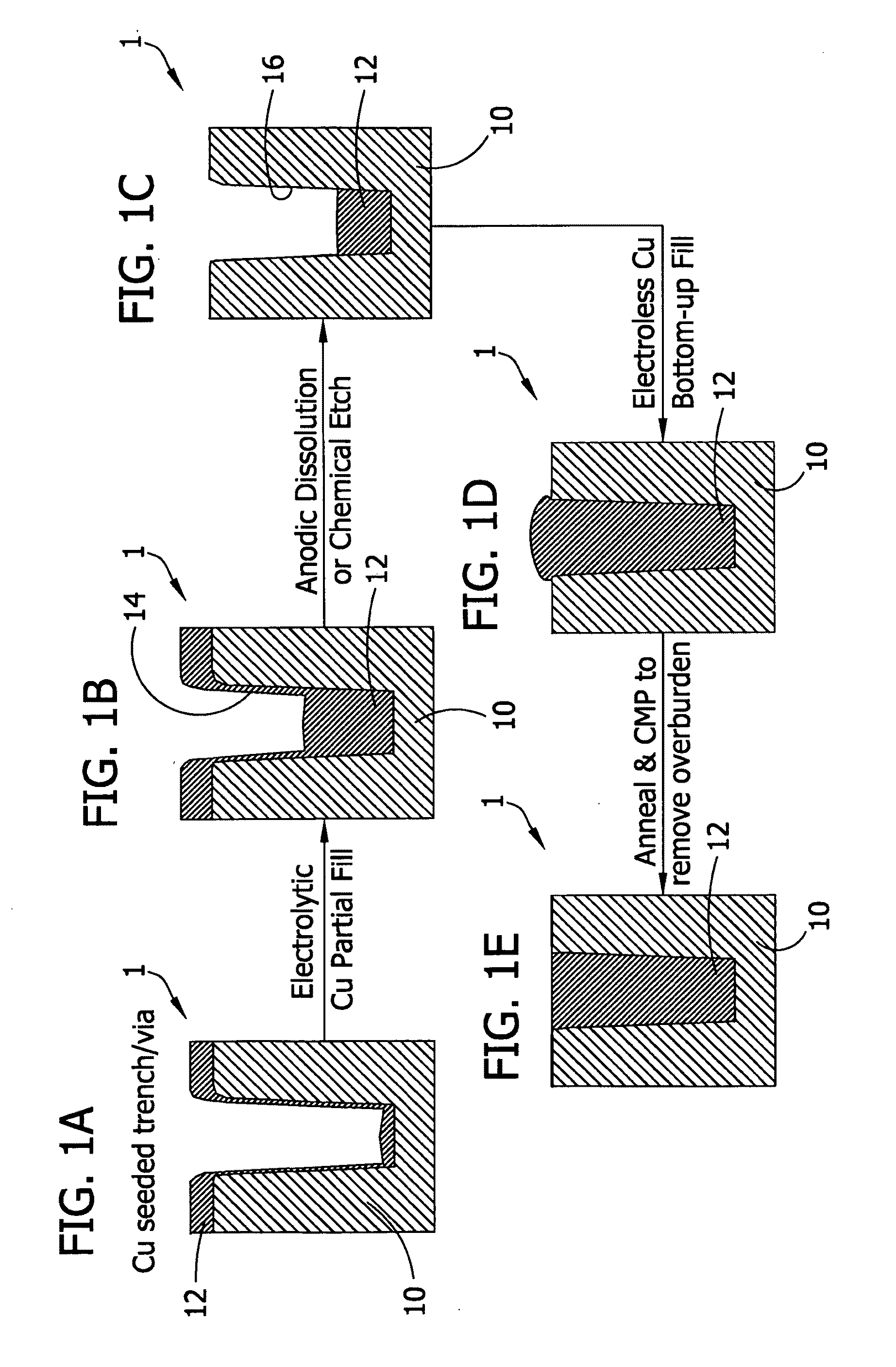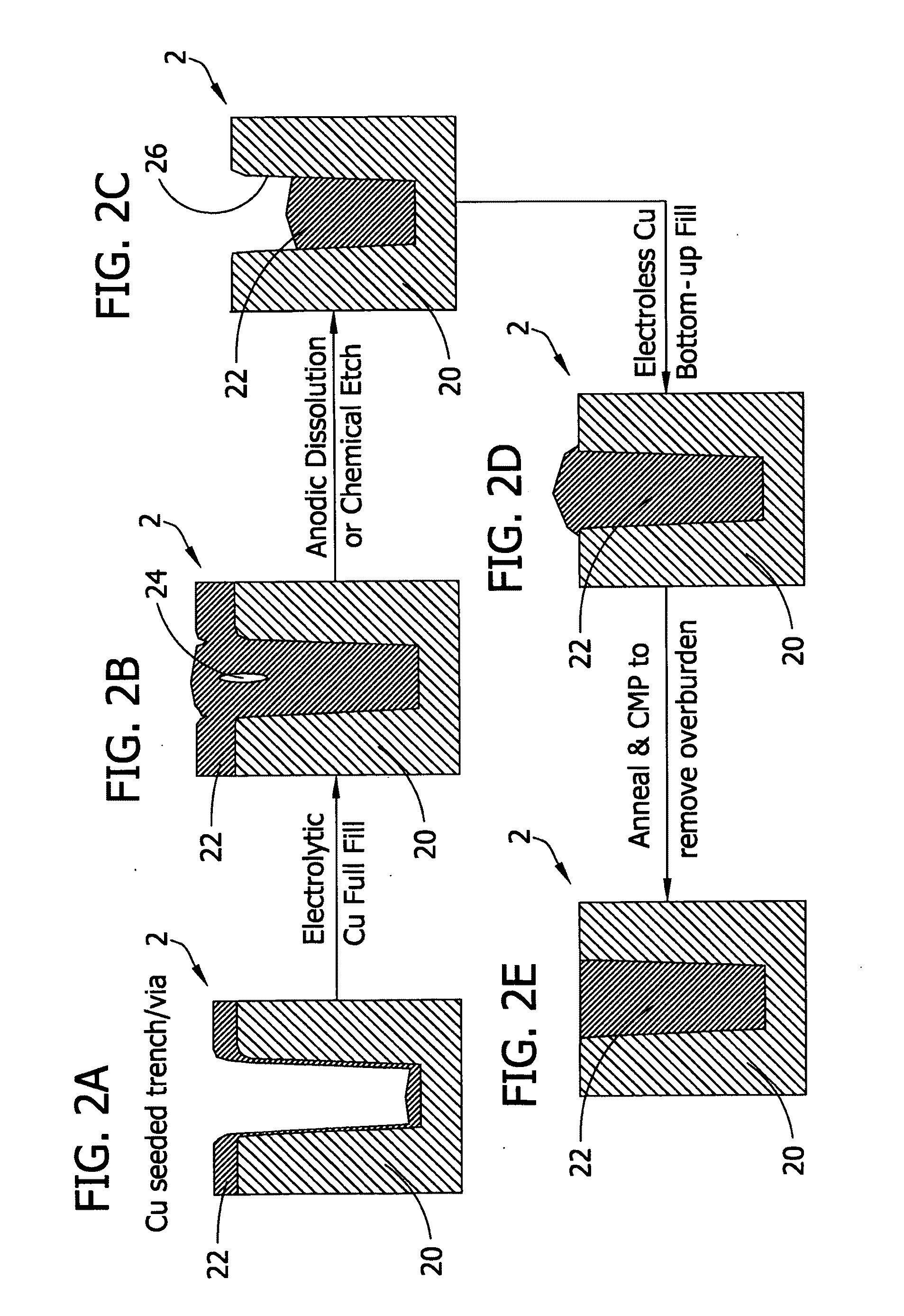Copper deposition for filling features in manufacture of microelectronic devices
a microelectronic device and copper deposition technology, applied in the direction of liquid/solution decomposition chemical coating, semiconductor devices, coatings, etc., can solve the problems of increasing difficulty in meeting requirements, disturbing electrical characteristics, and severe penalizing the overall performance of the structure, so as to improve the quality of copper deposition and simplify the deposition process
- Summary
- Abstract
- Description
- Claims
- Application Information
AI Technical Summary
Benefits of technology
Problems solved by technology
Method used
Image
Examples
example 1
Copper Metallization of Trenches
[0064]The process described in connection with FIGS. 1A through 1E was carried out and SEM images were obtained at various points in the process. FIG. 7 is a SEM image taken after electrolytic copper partial fill, and shows the damascene copper deposit is thickest on the bottom with a limited amount of growth on the side walls and top field. This was performed at 10 mA / cm2 current density for 30 seconds with ViaForm® LA Makeup chemistry available from Enthone Inc. of West Haven, Conn. with 6 mL / L ViaForm® Extreme accelerator and 2 mL / L ViaForm® Extreme suppressor. The chemical etching step to achieve the substrate depicted in FIG. 1C was then performed by 20 minutes immersion in saturated (NH4)2CO3 to yield the workpiece shown in the SEM image of FIG. 8. All the copper is removed from the sidewalls and top field, and residual copper is retained on the bottom of the features. FIG. 9 is a SEM image showing the results of electroless Cu bottom-up fill st...
PUM
| Property | Measurement | Unit |
|---|---|---|
| Depth | aaaaa | aaaaa |
| Depth | aaaaa | aaaaa |
| Nanoscale particle size | aaaaa | aaaaa |
Abstract
Description
Claims
Application Information
 Login to View More
Login to View More - Generate Ideas
- Intellectual Property
- Life Sciences
- Materials
- Tech Scout
- Unparalleled Data Quality
- Higher Quality Content
- 60% Fewer Hallucinations
Browse by: Latest US Patents, China's latest patents, Technical Efficacy Thesaurus, Application Domain, Technology Topic, Popular Technical Reports.
© 2025 PatSnap. All rights reserved.Legal|Privacy policy|Modern Slavery Act Transparency Statement|Sitemap|About US| Contact US: help@patsnap.com



